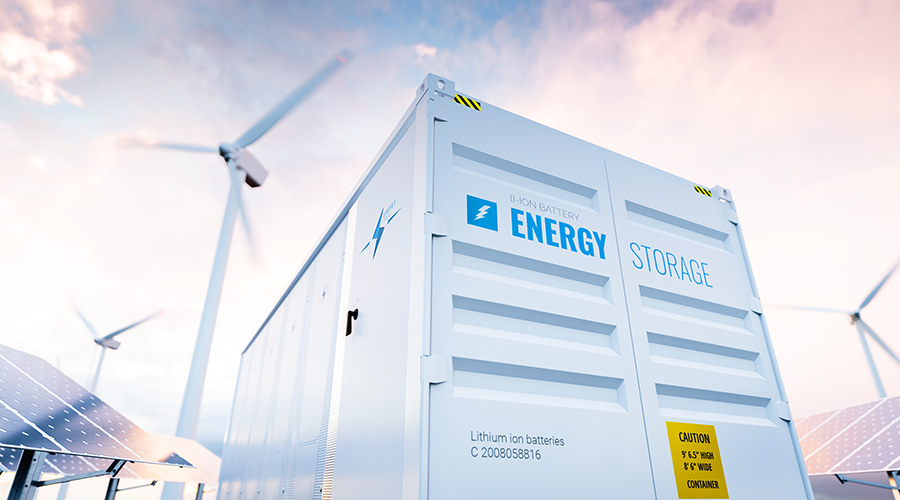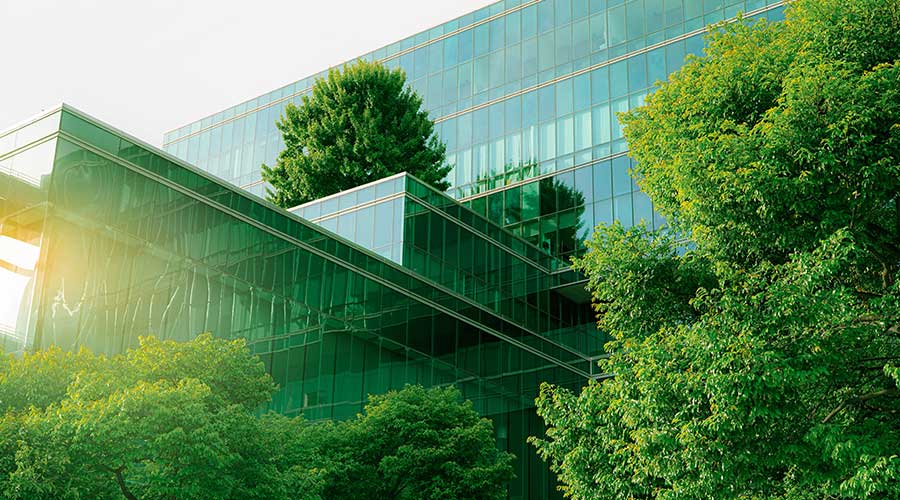Dollars Down the Drain?
Water may be more expensive than you think. High-efficiency plumbing fixtures can help stop the flow
Plumbing is an area where the mentality of “if it ain’t broke, don’t fix it” can cost facility executives thousands of dollars a year. Water use, wastewater management and the energy costs associated with both are bottom line items that are too often overlooked.
In a typical office building, the majority of indoor water use is directly related to plumbing fixtures: toilets, urinals, faucets, and other common water-using fixtures, such as showers, janitorial sinks, and trap primer systems. Facility executives who consider what water actually costs can better position themselves to reduce water use and wastewater costs. Plumbing fixture selection and keeping a careful eye on operations can significantly reduce water, wastewater and energy costs.
The Real Cost of Water
The first step for facility executives is determining how much water a building’s plumbing fixtures are currently using and how much that is draining from the budget. The number of people in the building, the building’s hours, the number of visitors and the type of plumbing fixtures all affect water use.
Metering and submetering are essential to managing water costs. It allows the facility executive to find problems, identify opportunities and monitor the bottom line. Every major water-using system — such as plumbing, cooling towers and irrigation systems — should be metered. And each building should have its own meters. With today’s technology, it is also possible to connect meters to an automated monitoring system so that use can be tracked from a central point, just as energy use often is.
The average human being uses a restroom about every two hours. For an eight-hour day at the office, that means the average is three to four uses a day, but this does not take into account extra flushes. There’s also a difference in water use between men’s restrooms and women’s because urinals use less water than toilets. Water use per person per eight-hour day in a typical office building can vary by a factor of five to six depending on the types and ages of fixtures being used.
Restaurants, medical clinics, schools and similar facilities probably have higher use because of different patterns of use, so facility executives should adjust expectations a bit higher when determining use rates at these types of facilities.
The cost to operate fixtures has a direct impact on the bottom line. With combined water and wastewater costs, water bills can add up quickly. And these costs do not include the energy required to heat water for faucets and other uses or the energy needed to pump water to the higher levels of a building.
For combined water and sewer costs of $8 per thousand gallons — a typical cost in many cities — the bottom line expense could range from $3,300 to $17,900, a huge difference.
To this cost, about $6 per thousand gallons should be added for any hot water use. This additional estimate takes into account the cost required to heat the water with gas at current rates for any hot water use.
The bottom line is that water isn’t cheap. At $8 per thousand gallons for water and sewer, an old 5-gallons-per-flush (gpf) toilet costs four cents per flush. New high-efficiency toilets can cost as little as a penny per flush.
The savings potential is significant. Suppose a building with 500 employees has approximately 75 old 5-gpf toilets. Simply upgrading them to the code-mandated 1.6 gpf can save $12,600 per year. Upgrading to high-efficiency toilets could save as much as $15,500 per year. Based on an estimated replacement cost of $350 per fixture, including labor, the cost would be $31,500. The project would have a two-year or less payback. In addition, any leaks will be fixed and, with new fixtures, maintenance will be reduced.
High-efficiency Options
Toilets and urinals are a quickly evolving technology. New words and phrases — such as HET, pressure assist, dual flush, MaP testing, zero water consumption urinals, and HEU — are being used more and more often. All of this represents the new lexicon in water efficiency for plumbing fixtures.
Code currently requires that all toilets use an average of 1.6 gpf and urinals use 1.0 gpf or less. Many of the early 1.6-gpf toilets had performance problems that gave them a bad name. It took a decade or so to work out the kinks and combat fears that 1.6-gpf toilets actually were a viable option.
Hoping to avoid another perception problem, plumbing manufacturers and water utility and regulatory representatives are working to ensure that the new generation of even more water-efficient fixtures works well from the start. As a result, new realistic toilet performance tests have been developed that measure the ability of a toilet to work with just one flush.
These maximum performance tests (MaP tests) are being used by the new EPA WaterSense program to develop a list of high-efficiency toilets (HETs) that use no more than 1.28 gpf. In addition, many tank-type pressure-assist toilets flush with as little as 1.0 gpf.
HETs may also be dual-flush — toilets that have special flush valves or flushing mechanisms to flush at 1.6 gpf for solid waste and as low as 0.8 gpf for liquid waste. Dual-flush toilets have found significant use in Australia and some European countries, and tests show that they are very effective at saving water. It’s important to note, however, that occupants should be educated about how the toilets work to achieve the most water savings.
For urinals, there is no equivalent to MaP testing, but more water-efficient models are quickly making their way to market. Urinals that use from 0.5 gpf to no water at all are available. Facility executives should test high-efficiency urinal (HEU) models with their plumbing to make sure they work for the types of pipes installed. Whether facility executives are just replacing one broken older urinal or retrofitting a whole building, significant water savings are possible with HEUs.
With the support of plumbing fixture manufacturers, the government, and water conservation officials across the United States, these new high-efficiency fixtures are here to stay. With MaP testing for toilets, problems associated with the introduction of the 1.6-gpf toilets nearly two decades ago are being avoided. Some utilities even provide HETs for free or offer rebates as part of their water conservation efforts and many are looking to change future code to require them.
The most significant example of this is in California. On Oct. 11, Gov. Arnold Schwarzenegger signed a bill that requires all toilets sold in California after 2014 to use no more than 1.28 gpf.
Other fixtures and fittings that should be considered for their water-saving potential include:
Shower heads with flow rates as low as 1.5 gallons per minute are available, but such fixtures should be fed by mixing valves to prevent scalding. Many find that these more efficient shower heads work well and save energy too.
Lavatory faucets are also a major consideration. Metering and electronic sensor faucets that use no more than 0.25 gallons per cycle and faucet aerators of 1.0 to 0.5 gallons per minute are now commonly found in facilities.
Trap primers — devices used to assure the delivery of water to floor drain traps to prevent the evaporation of the water seal that protects a building or room from sewer gas fumes — should be either controlled by automatic timers, activated by pressure variations, activated by flush-valves or use the wastewater from a lavatory P-trap.
Equipment “hook-ups” such as ice machine and kitchen equipment should have easily accessible and readily visible shutoff valves.
Green Goals
Focusing on water efficiency can result in bottom line savings. As water and sewer costs rise, the new range of water-efficient fixtures can help control these expenses. Innovations are giving facility executives choices of fixtures that will perform well, reduce water use and help a facility be green.
In fact, rating systems like LEED and Green Globes have become mandatory in one form or another in more than 100 cities across the country, according to a study by the University of Wisconsin-Extension and Flad Associates. But even where they’re not mandatory, these green building rating systems are becoming the new standard by which buildings are designed and constructed.
Plumbing fixtures are important considerations in all of these programs. HETs and HEUs contribute to points in LEED’s water efficiency categories for plumbing fixtures.
Green certification is becoming a feature that potential tenants and purchasers alike are considering when renting or purchasing commercial property. Facility executives should learn how water efficiency can help achieve green building goals.
How to Maintain Expected Water Savings
A facility executive at a large institutional building complex once approached a local water utility to ask why the water bill had gone up. The complex had toilets installed from the 1930s to the late 1980s, along with several brand new fixtures. After some investigation, the facility executive discovered that the complex was using all 4.5-gpf diaphragms for the flush valves, because it made the maintenance staff’s work easier. Of course it also meant that all toilets — including the new 1.6-gpf toilets and the 3.5-gpf toilets — were being flushed at a rate of 4.5 gpf. By metering water use, more fully understanding the water use characteristics of the fixtures and identifying which replacement parts were being used, the facility executive found an opportunity for significant savings.
The key is to ensure that the proper replacement parts are used and that there is a system in place to ensure that leaks and plumbing malfunctions can be easily reported. A flush valve stuck wide open can dump $3 to $4 an hour down the drain 24-7. To capture these potential savings, of course, the facility executive should have resources or staff that can respond to problems in a timely manner.
|
Herman William (Bill) Hoffman, Jr., P.E. is principal of H.W. (Bill) Hoffman and Associates LLC, a firm specializing in sustainable water resource planning and conservation. He has 40 years of experience in water conservation and sustainable water resource development.
Related Topics:











